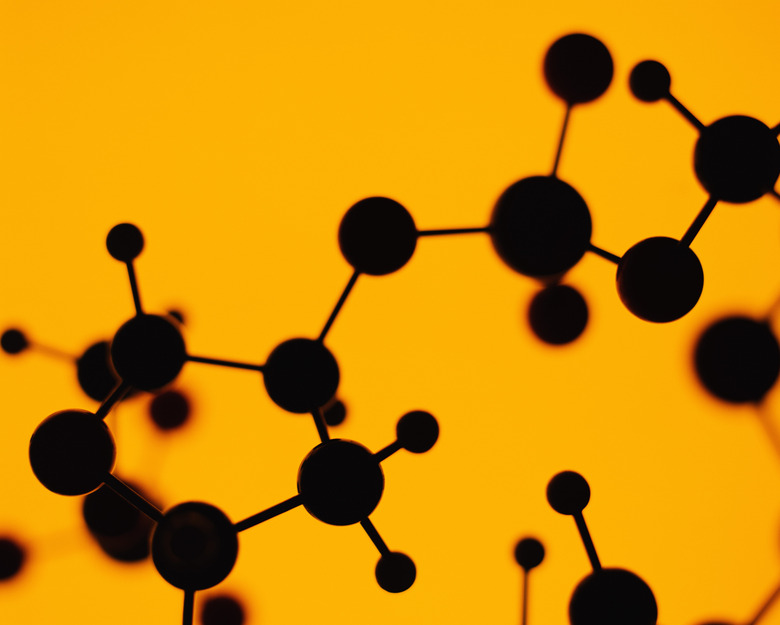What Are Two Ways That Enzymes Become Less Effective?
An enzyme is a highly complex protein that behaves as a catalyst for reactions. A catalyst is a substance that increases the rate of a chemical reaction without being consumed by the reaction itself. Enzymes are critical for life and are ubiquitous in nature. Because enzymes have a very specific three-dimensional structure, changes in conditions such as temperature and pH can impact their effectiveness.
Denaturation
Denaturation
The three-dimensional structure of an enzyme forms the active site, or the business end of the enzyme, where reaction catalysis takes place. Changes in this active site can be affected by factors such as pH or temperature and the effectiveness of the enzyme will therefore be reduced when optimal conditions are not present. When the enzyme loses its shape, it is called denaturation.
Amino Acid Side Chains
Amino Acid Side Chains
The amino acids that make up proteins, and therefore enzymes, are made up of a central carbon atom, a hydrogen atom, an amino group, a carboxylic acid group, and an "R" group. The R group is also called a side chain. The side chain or R group is a specific arrangement of atoms that makes that amino acid unique, and may behave as a weak acid or base in solution and has a specific ionization state. This ionization state affects the structure of the enzyme.
Effect of pH
Effect of pH
All enzymes have an optimal pH at which they function best. The pH allows the enzyme to assume a certain conformation that lends itself to the shape of the enzyme's active site. When the active site is the right shape, it is able to effectively bind to a substrate, or starting material of the reaction, and catalyze the reaction. The active site is a result of a specific conformation of the enzyme's amino acid side chains, which form weak associations with one another due to their ionization state and form the resulting specific three dimensional structure of the enzyme. Without the correct pH, this three dimensional structure will not form properly. Biochemical buffers in living systems are able to keep the enzyme within its optimal pH range.
Effect of Temperature
Effect of Temperature
Temperature affects the three-dimensional structure of enzymes as well. Each enzyme has an optimal temperature range within which it functions best. A temperature that is too high will denature the structure of the enzyme, changing the shape of its active site so it cannot effectively catalyze a reaction. A temperature that is too low will not provide enough energy to the system for the reaction to progress at its maximum rate.
Cite This Article
MLA
Riggio, Gina. "What Are Two Ways That Enzymes Become Less Effective?" sciencing.com, https://www.sciencing.com/what-are-two-ways-that-enzymes-become-less-effective-12731017/. 8 December 2013.
APA
Riggio, Gina. (2013, December 8). What Are Two Ways That Enzymes Become Less Effective?. sciencing.com. Retrieved from https://www.sciencing.com/what-are-two-ways-that-enzymes-become-less-effective-12731017/
Chicago
Riggio, Gina. What Are Two Ways That Enzymes Become Less Effective? last modified August 30, 2022. https://www.sciencing.com/what-are-two-ways-that-enzymes-become-less-effective-12731017/
